
Renée Zellweger as Judy Garland.
Judy Garland was undoubtedly a great actress, one that will be remembered for many years to come. Smart and friendly as Dorothy in The Wizard of Oz, she had conquered the hearts and the imagination of audiences since she was a child. But her professional image is just a part of the story. Deep beneath the persona of a great film star, there was a vulnerable, hurt woman. And that’s what Judy is about.
FROM THEATRE TO FILM

A photo from “The End of the Rainbow” stage play.
The idea of Judy came from a theatrical play titled The End of the Rainbow. Just like the film, it tells the story of Judy Garland’s London performances, which predated her death. The play was seen in London by the producer of the film, David Livingstone[1], who then spent half a year to obtain the rights to adapt it for the screen. After he succeeded, he hired a screenwriter with whom he worked for two years. However, the effect was not satisfying, so they concluded their cooperation, and Livingstone sought for someone else. Eventually, he chose Tom Edge. Until then, Edge had mainly written for TV (some episodes of The Crown and Strike, among others). He turned out to be just the right person for the project, however.
The End of the Rainbow was just a starting point for Edge, although — as he says[2] — quite a useful one because it helped him to find the frame of the story. He then added some elements inspired by the interviews and recordings of Judy’s. The former helped him to understand a sort of Garland’s dualism[3]:
When the producer, David Livingstone, asked me to start looking at it, the thing that really moved me the most was probably looking at some of the original interviews that Judy did in the mid-sixties. Looking at those interviews, most of which are still on YouTube, conveniently, you see this woman who is incredibly polished, giving a very entertaining anecdote from one of the many decades that she was out there working but, at the same time, you see moments of real vulnerability, when she’s questioned about her children in particular. I just thought she looks fascinating. There was a thread of anger there but also incredible wit and humanity and I just thought this looks like an incredibly complex woman and I wanted to get to know her better.
He got to know her better thanks to the aforementioned recordings. Judy Garland was supposed to write her autobiography but she wasn’t able to meet the deadlines so she was told to record her thoughts and then they were to be written down by someone else[4]. The tapes showed a woman who was exploited, disappointed and angry. Edge has successfully incorporated these characteristics in the script.

Darci Shaw as young Judy Garland.
Thanks to the thorough research and the attempt to look at the actress objectively (Edge didn’t contact Garland’s children so that the character in his script wasn’t filtered through someone else’s notions of her[4]), the film’s Judy is written wonderfully when it comes to psychology. Edge manages to capture the public image of Garland’s, but also her private one: a woman who struggled with financial problems, addiction and being away from her children. He takes these two, opposite poles, you could say, and incorporates them into a character who is incredibly coherent and believable; a person we are able to understand perfectly and with whom we feel pain and joy. The image wouldn’t be so full, however, if Edge didn’t juxtapose Garland’s London days with her origins in the show-business. And these times weren’t easy because they were associated with sacrifices, the studio’s impossible requirements and Judy’s relatives’ manipulations — especially her mother’s. Garland was forced to constant work and weight-loss; she took pills and was sexually molested. Here’s how Edge explains putting all this into the script[3]:
One of the things that we thought was interesting was by taking these weeks at the end of her life and pairing them with these formative weeks as they go into production on The Wizard of Oz really offered two ends of the rainbow: the young woman who is so full of life and promise, she’s so spirited, there’s that kick of rebellion to her despite everything that is being thrown at her; and at the other end, in the last year of her life, you have echoes of that and you also have a sense of how the challenge of living through those months is informed by that period.
And it works, particularly because the screenwriter quite aptly connected the flashback scenes with the main timeline thematically.

Renée Zellweger as Judy Garland, Bella Ramsey as Lorna Loft and Lewin Lloyd as Joey Loft.
The complex portrait of the film’s Garland is complemented by the supporting characters. Although they appear just for a moment, her children, Lorna and Joey, are absolutely crucial to the story. The fight for rights to their custody is what motivates the actions of homeless and out-of-money Judy. Perhaps this is a bit cliché element, one that is based on the worn-off stereotype of a woman-mother, but, on the other hand, it’s deeply rooted in the facts[5]. Lorna and Joey were extremely important for Judy and it was the willingness to guarantee them a normal childhood that forced the actress to go to London — the only place where she had the opportunity to earn money. The relationship resonates in the film quite strongly and Edge concludes it in a satisfying, although a little bittersweet way.
Mickey Deans, Judy’s fifth husband, is also very important to the story. On one hand, his presence highlights the actress’s need for love and on the other one, it also shows how often Judy was led astray by men. The film’s Deans, although admirable and friendly at first, ultimately turns out to be an untrustworthy schemer; from someone who gives Garland hope, he transforms into someone who takes it all away. The fact that, despite the disappointment Garland experiences, she doesn’t give up and fights, is especially moving.

Jessie Buckley as Rosalyn Wilder.
Garland’s London performances would not have taken place if not for their organisers. Edge turns his attention to two crucial people who participated in the events: Judy’s assistant at the Talk of the Town club, Rosalyn Wilder, and the musician who accompanied Judy on the piano, Burt Rhodes. The relationship between Wilder and Garland, not easy at first, gradually deepens and the women eventually find their common language (but it doesn’t mean there aren’t conflicts). Edge makes Wilder’s character a bit of a proxy between Judy and the viewer who, just like Wilder, slowly gets to know Garland better and better.
Rhodes is not as distinct as a character. He is a departure from the original play, which had Anthony — Garland’s fictional homosexual accompanyist and confidant. Edge knows, however, how important the actress is for the LGBTQA+ community and that’s why the film includes Stan and Dan — a pair of homosexual fans, who end up having a special kind of relationship with Judy.
We wanted to move away from the balance that the play offers of this fictional character and Judy, and create something a little closer to the events but, at the same time, it felt important to us that her relationship with that community, which was highly reciprocal. I think those moments where they connected live are astonishing and we wanted to acknowledge that. I think that relationship ends up capturing something about Garland and her relationship to love. She was always seeking love that she could rely on and the great challenge was that she was parted from family, she was parted from husband after husband. Her relationship with her audience who came out for her night after night, even on the nights where other people were throwing bread rolls, was in a sense one of the most enduring and we wanted to pay tribute to that and explore that as well[3].

Renée Zellweger as Judy Garland.
And it’s exactly as he says — although Stan and Dan may seem a forced addition at first, their story lets you look at the social dimension of Garland’s artistic activities. The scenes with Stan and Dan (including the absolutely beautiful finale) end up showing the deep relationship of Judy Garland and her fans, and stress the actress’s exceptional ability to win people over. They also make water gather excessively in your eyes.
The script has got some parallel themes with The Wizard of Oz, which is mentioned in many interviews[6][7]. Just like Dorothy, Judy enters a strange land and, trying to find her way home, she encounters people who help her. This is an interesting structural reference, especially when you compare it to the aforementioned flashbacks, which directly refer to the time Garland spent on the set of The Wizard of Oz.
Edge, although he sometimes gets into biopic cliché territory, ends up achieving his goal[2]: presenting Garland to those who only know her superficially. He manages to show the actress’s unknown side and to tackle the problems of her fame, the price of that fame and even the oppression of the patriarchy at times.
THE STAGE ON THE FILM ROLL

Rupert Goold and Renée Zellweger.
Judy was directed by Rupert Goold. He is an interesting person because he has got a theatrical background and has entered the cinematic world fairly recently, in 2017, with True Story. Judy is his second cinematic endeavour, but a very solid one. This is mainly due to the fact that — as you can read from many interviews[8][9] — he is highly aware of the differences between the theatre and cinema. As a result, although the film is based on a play, there is nothing theatrical about it. Goold even decided[9] not to watch the original so that it didn’t inform the process of filmmaking.
After the producer, David Livingstone, invited him to the project, Goold wondered[10] if he was the right person to do it. He didn’t know much about Garland[11] and didn’t feel the themes of the film. After he has read the script, he contacted Edge, however, and during these talks, he realised he has spent his whole life near stage actors. He decided to show what really happens when you perform:
The pressure of it and the sometimes loneliness and the ecstasy, weird stresses performers have to go through[10].
He started to feel the themes of the film more and more and noticed how much in common he had with them.

Rupert Goold and Renée Zellweger.
The perspective of Garland the artist and her inner dilemmas don’t overshadow the rest of the script elements which Goold shows on the screen. With the flashbacks, which are made to look as if they happened in a controlled environment far away from the real world[6], he stresses the importance of the actress’s childhood and the influence of the powers that be, including Louis B. Mayer and Garland’s mother (which she called “the real wicked witch of the west”[5]).
He also clearly shows how important motherhood was for Garland, because — although there aren’t many scenes with her children, Lorna and Joey — Goold does everything he can to make them emotionally resonant (especially in one of the last scenes, where Garland speaks with her daughter on the phone — it’s uniquely moving). He also tries to make that story inform the rest of the film.
All the time, Goold stays close to Garland, studying her every movement, gesture and face expression. It almost makes you feel like you are her friend; like you have immediately found a common language with her. This is, of course, the effect of very close cooperation between the director and Renée Zellweger who plays the main role and, reportedly, always consulted every take with Goold.[7].

Rupert Goold and Renée Zellweger.
Such close observation has got one more merit — it deepens the feeling of authenticity, which was also the director’s goal. He achieves it best when Judy enters the stage for the first time and sings “By Myself”. Goold, inspired by Fred Astaire[1], decided to show it in one, long take and not to interweave it with the audience’s reaction. This way, he was able to show every little detail of the performance and help the viewer to feel what it really means to enter the scene in front of a big audience.
One of the great advantages of the film is the fact that Goold entrusted Zellweger with singing, despite having thought about using playback[12]. Luckily, he managed to talk the actress into live performing, which not only further reinforced the authenticity of the film but also let Goold stress some nuances of the scenes. You can see it during the finale, when Garland sings “Over The Rainbow”. Using playback would not allow conveying a lot of emotions that Zellweger emphasises with her cracking voice.
BRINGING THE CHARACTERS TO LIFE
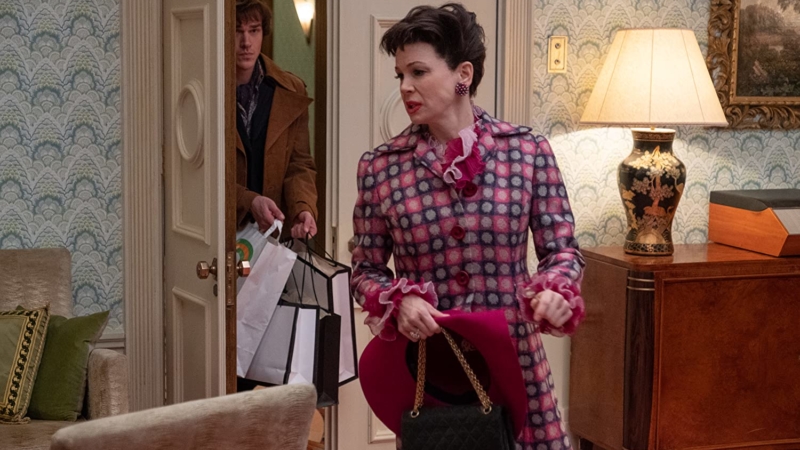
Renée Zellweger as Judy Garland and Finn Wittrock as Mickey Deans.
The main actress in the film, Renée Zellweger, received the Judy screenplay from the film’s producer David Livingstone. Although she liked it very much, she didn’t understand why it was sent to her. Eventually, she went to London, where — she jokes — she just tried different things until the end of principal photography[13]. These “trials” ended up being one of the best roles of her career.
Zellweger not only brought Judy Garland’s bearings back to life but also put a lot of authentic emotions into her performance so that the role wouldn’t become an empty parody or a caricature. That’s what the director had also wanted from here since the very beginning[14]. Zellweger was excellent in achieving this goal, gradually discovering what could be hidden beneath Garland’s witty and amusing public persona — loneliness and melancholy but also the willingness to fight and stick to her dreams for whatever the price may be.
Zellweger also put it all into her singing. In a very emotional performance of “By Myself” — the first song sung by Garland in the film — the actress, after a brilliant game of cat and mouse with the audiences, shows a strong woman who is willing to fight for herself despite her doubts. The emotions are conveyed in her voice and in the stage movements perfectly synchronised with the song’s contents. It was a perfect copy of the actual Garland’s stage behaviour, which Zellweger studied, rehearsing in front of the mirror and comparing her acting to a recording played on an iPad[15].
Zellweger stays this way until the very end, although each of the songs she sings is an opportunity to tell something different. I was especially moved by the final scene, where she sings “Over the Rainbow”, Performing the song with a cracking voice, Zellweger’s Garland desperately reaches for dreams and illusory hope. It’s a heart-breaking performance and the extras on the set also felt that while filming[11].
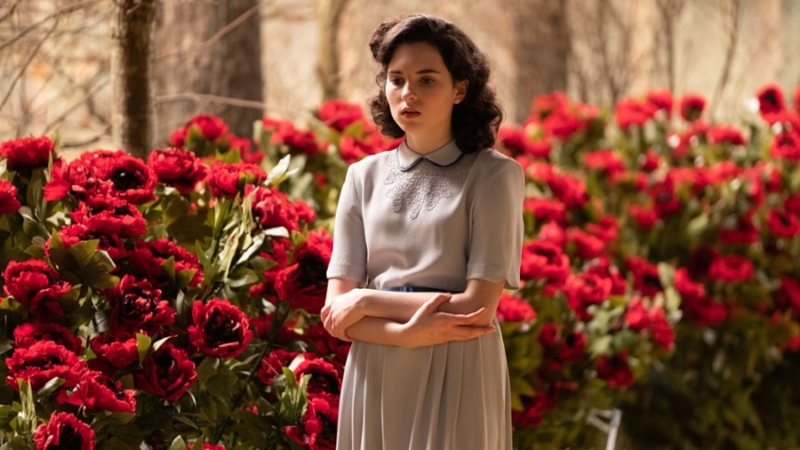
Darci Shaw as young Judy Garland.
In the flashbacks scenes from the times when Garland worked on The Wizard of Oz, the role is played by Darci Shaw. Initially, Goold was afraid he wouldn’t be able to find the right person. As with Zellweger, he didn’t focus on physical appearance but rather a certain group of characteristics. He wanted the actress to have something old-fashioned about her, to be able to portray the spirit of the youth from those times[12]. Shaw does have this group of characteristics. As young Garland, she is a bit refined, but she also shows the rebellious side of the actress quite naturally, and she adds a little melancholy to the mix. It corresponds with Zellweger’s roles in a fascinating way. Although Shaw is not as expressive, you have no difficulties believing this innocent girl with big dreams will once transform into a star who still has got big dreams but also many problems.
At Zellweger’s side, there is Finn Wittrock, who played the role of Mickey Deans, Judy Garland’s fifth husband. His character is not easy to read. Wittrock sells it with a puckish smile and an aura of a gallant, though a bit roguish gentleman. While preparing for the role, the actor read Deans’s book and watched archive videos with him, but first and foremost — as he jokes — he fell in love with Judy Garland while watching her films[1].
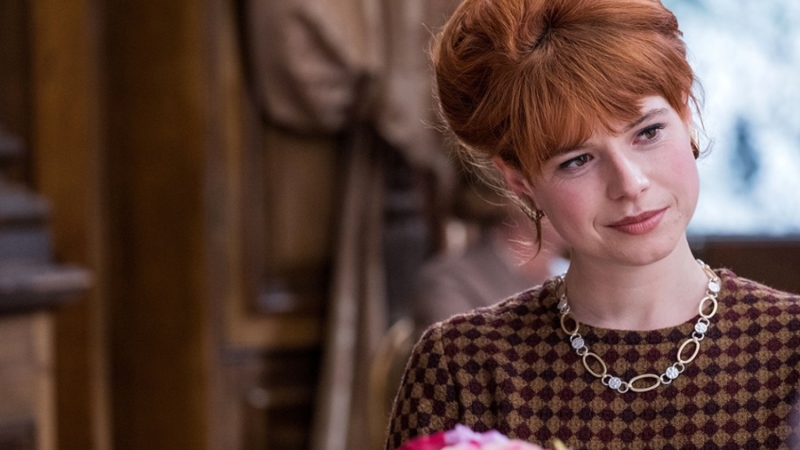
Jessie Buckley as Rosalyn Wilder.
Jessie Buckley also had an intriguing role. She’s gradually making her presence known in Hollywood and she does it quite effectively. The finalist of the British talent-show, I’d Do Antyhing, first won over the theatre audiences, then took part in a few TV series (War and Peace, Taboo), and finally delighted the world with a complex role in Beast. Although Rosalyn Wilder, whom she plays in Judy, is not as distinct a character as the one she played in her big-screen debut (that’s the job of Zellweger’s, after all), Buckley does attract the viewer with her presence. Goold says she is an “emotionally transparent” actress[12] and that’s true — one look, gesture or smile is enough to notice the emotions deep inside her character. It’s a really valuable feature for an actor to have.
Those who watched The Witcher will be happy to see Royce Pierreson (i.e. Istredd) as the pianist Burt. That’s an interesting casting choice, by the way, because the real Burt Rhodes was not a person of colour. Goold decided the colour of his skin was not as crucial, however, as a specific acting quality — here: his gentleness [7]. This was, by all means, a perfect choice because Pierreson, just like Buckley, is able to intrigue just with his presence.
The fans of the TV series for children and teenagers will be happy with the casting of Bella Ramsey from The Worst Witch (okay, and Game of Thrones, meh) and Lewin Lloyd from His Dark Materials. They are both adorable and show two different shades of longing for their mother. And it really is not that important that their American accent was not entirely convincing.
RECREATING JUDY’S WORLD
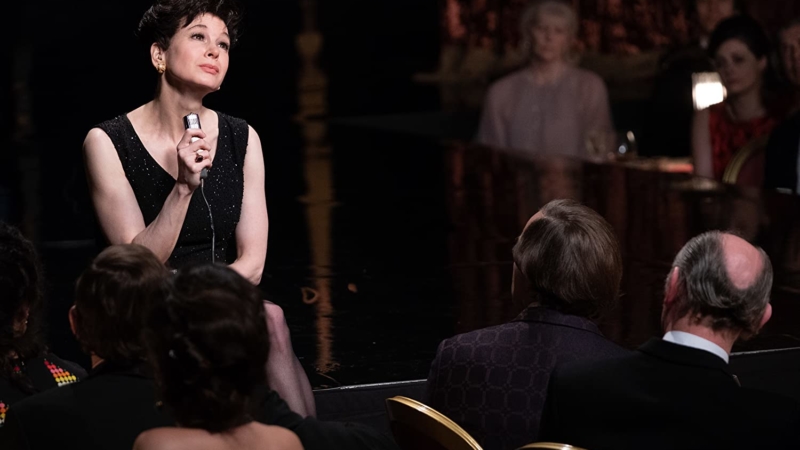
Renée Zellweger as Judy Garland.
Ole Bratt Birkeland was responsible for Judy’s cinematography. He also worked on such films as The Little Stranger and Ghost Stories, where he was free to experiment aesthetically. Judy, however, is more toned down and classic cinematography-wise, but it doesn’t mean it’s uninteresting. Goold told Birkeland to observe the main character very closely, which let the DP capture her every emotion and highlight Zellweger’s brilliant acting. The style changes during the flashback scenes (aesthetically different for a purpose, as I’ve said before), where he takes the viewer to a sterile film studio and the illusory magic of the land of Oz or, more broadly speaking: Hollywood in general.
Melanie Ann Oliver (Les Misérables, Bridget Jones’s Baby) edited the film. She was attracted to it by the story of Judy Garland’s motherhood. She mentions she is also a working mother, so she could find something in common with the character[16]. She stresses the importance of the film’s musical aspect:
The musicality of a scene — its pace, rhythm and structure, the way it breathes and the emotions it imparts, all come from a universal musical language; a language that transcends mediums. When that language is used in a film, whose subject or content is music, the result can be incredibly powerful. I’ve been lucky enough to contribute heavily to several musical films: Les Misérables, Judy, and currently Cats, and feel as an editor that this language of music is something I innately understand. The challenge of using the many threads and layers of editing to create a tapestry of images, sounds and music; mining the footage for unique psychological moments and interweaving them into an emotional musical arc is something I love and strive for in my working life[16].
Oliver does manage to capture this musicality of the film, which structurally is a little like Garland’s melancholic song, strongest when the actress stresses the most important phrases with emotions.
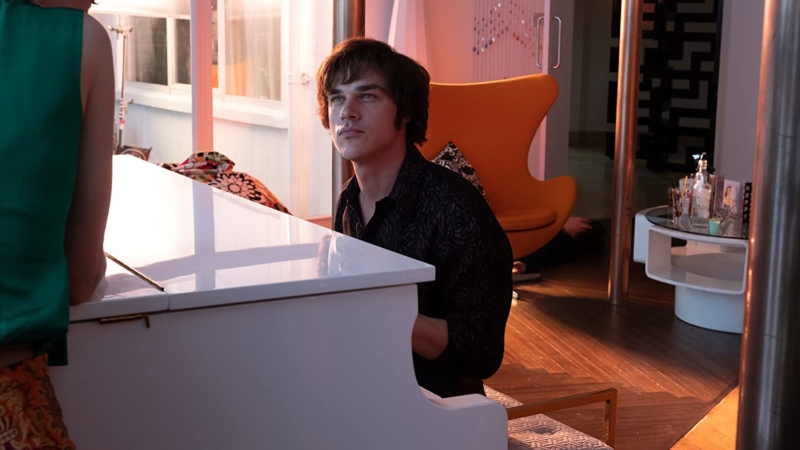
Finn Wittrock as Mickey Deans.
Kave Quinn worked on the production design. Her and her team’s job was mainly to recreate the spirit of the 60’s London. The key task was to adapt one building in such a way that it looked similar to the Talk of the Town club, where Garland performed. They chose Hackney Empire, which Quinn and the set decorator, Stella Foxed, prepared for the crew so that they would able to freely capture the scenes of Garland’s performances in a minimal number of takes[17]. Hackney Empire turned out to be really malleable. Sometimes it’s this big, revue-like scene, and sometimes it seems like a suffocating place from where you’d rather run away. A big challenge was also to build the set for the flashback scenes. Because the filmmakers did not have the rights to 1939 film’s version of Oz, Quinn had to design something that would be close enough, but not an exact copy.[17]. She did manage to do it because I learned the decorations were only “inspired by” after I’ve watched Judy (although there is also the fact that I watched The Wizard of Oz quite a long time ago).
Jany Temime designed the costumes for Judy. She previously worked on some Harry Potter films among the others. She started with thorough research on Garland’s clothes in the ’60s (both for the stage and in personal life), and the ones she wore when she took part in The Wizard of Oz. She even made special folders, which she showed to the director. He gave her liberty when it came to the earliest costumes and the ones from personal life but wanted to cooperate closely on the ones worn by the actress during her performances[18]. Interestingly enough, these weren’t 100% the same as the actual ones but they were rather inspired by them[18]. It gave Temime more liberty but also allowed her to design costumes that would best reflect Garland’s inner emotions during the performances. This way, the emotions played by Zellweger and expressed in the songs meet with the themes on the costumes, which enhanced the effect. So did one more technical detail. Every costume was designed in such a way that it would fit only if Zellweger hunched a little[18]. Thanks to this, the actress was able to feel the character even better.

Renée Zellweger as Judy Garland and Finn Wittrock as Mickey Deans..
Renata Gillbert’s make-up also facilitated it. Although the actress is not a perfect copy — more make-up and prosthetics would probably limit her ability to act with her face, and Zellweger does wonders with it — she is very close to Garland of those times anyway. This is mainly the effect of false teeth and a black wig — some basic tricks, whose results are surprisingly effective when mixed together with some ageing make-up.
Gabriel Yared wrote the music for the film. The French-Lebanese composer has worked on The English Patient (for which he received an Oscar and a Grammy), The Talented Mr Ripley and Cold Mountain. He was hired after Judy was shot, but it didn’t affect his ability to closely cooperate with the director[19]. He wrote lyrical, melancholic tracks, where you can hear strings, flutes and piano, with delicate hints of a choir here and there. Most of them are variations of the main theme, which Yared adjusted to the main character’s mood — therefore the more serious sounds in a minor key sometimes transform into a waltz. There are a few surprises and eclectism too — in one of the tracks, which illustrates Judy’s sleep issues, Yared refers to the aesthetics of jazz. He also alludes to the music from the times when The Wizard of Oz was produced. If it’s about the most moving track, I would say it is the final composition, where Yared highlights the capturing of the unattainable dream, the proverbial “rainbow”.
SHOULD YOU WATCH IT?
“You won’t forget me, will you?”, asks Judy Garland in the final scene of the film, moved by the audience’s reaction. It’s consoling that, although Garland’s life was not always joyous and happy, we won’t likely forget such an amazing star and personality. Goold’s film makes her presence in our common memory long-lasting but its main merit is that it helps us understand her a little. And despite it being an image filtered through the filmmakers’ point of view, they absolutely managed not only to capture Garland’s phenomenon, but also her humanity. And this is one of the many reasons you should watch the film.
References:
- ^abcJUDY Cast and Crew Q&A | TIFF 2019.
- ^abTom Edge on Judy and Renée Zellweger at premiere in London interview.
- ^abcTom Edge – Judy – European Premiere.
- ^ab“I Am an Angry Lady”: The Haunting Judy Garland Tapes That Inspired
Judy. - ^ab‘Judy’ Movie vs. the True Story of Judy Garland’s Final Years.
- ^abJudy Movie Interview with director Rupert Goold.
- ^abcQ&A: Director Rupert Goold Takes ‘Judy’ Over The Rainbow.
- ^JUDY | Rupert Goold interview | HOT CORN.
- ^abRupert Goold on Judy and directing for film vs. theatre.
- ^abJudy Interview: Director Rupert Goold On Bringing Judy Garland’s Life To
The Big Screen. - ^abJudy director Rupert Goold talks Renée Zellweger’s performance and Judy
Garland’s legacy. - ^abcDirector Rupert Goold on finding the perfect Judy Garland in Renee
Zellweger – Judy Interview. - ^Renée Zellweger & Her Awards Season Return In ‘Judy’: Why You’re
Gonna Love Her, Come Rain Or Come Shine. - ^Renée Zellweger: ‘A little mystery never hurt a girl’.
- ^Renée Zellweger and Rupert Goold Break Down a Scene from ‘Judy’ | Vanity
Fair. - ^abMelanie Ann Oliver Reflects On Editing “Judy”.
- ^abKave Quinn Takes Us To 1930s’ Hollywood, 1960s’ London In “Judy”.
- ^abc“IT’S SPECIAL – NOT A NORMAL FILM”: COSTUME DESIGNER JANY TEMIME ON
DRESSING HER JUDY GARLAND. - ^Composer Gabriel Yared On the Emotional Process of Scoring ‘Judy’.

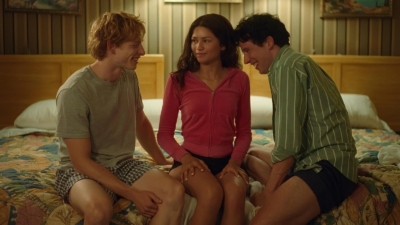







Leave a Reply